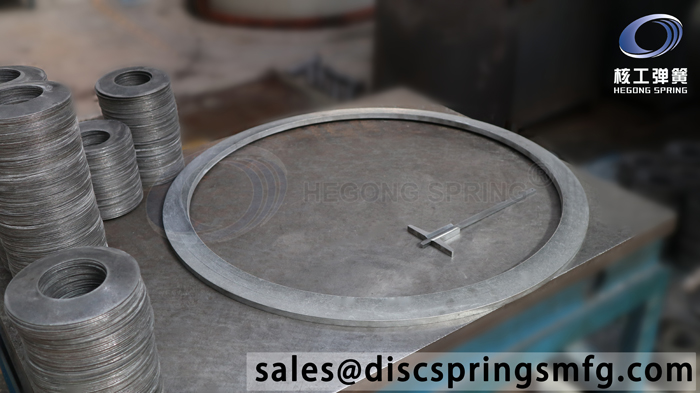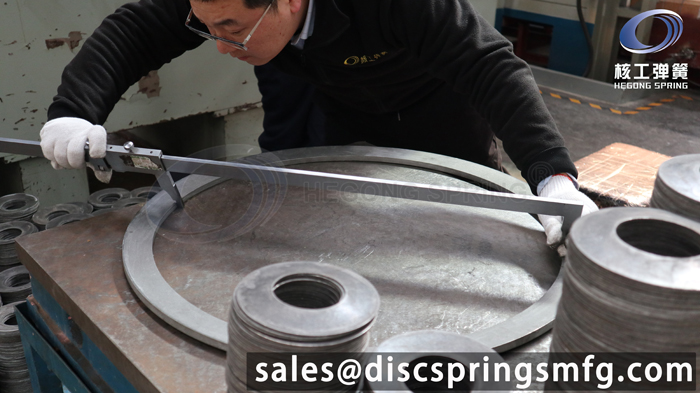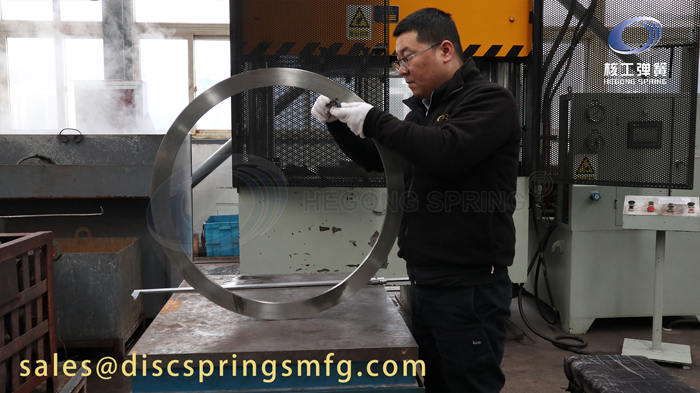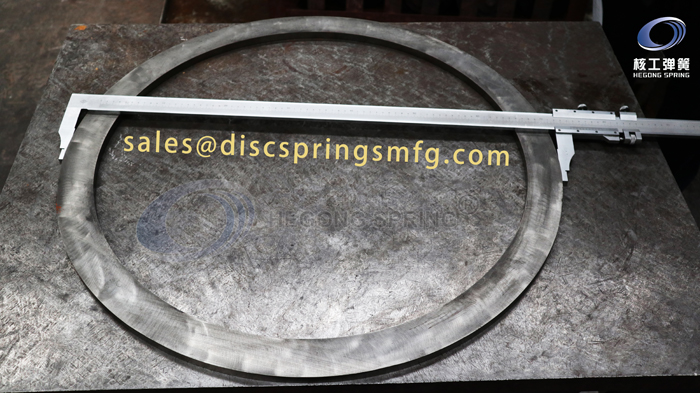One order of Inconel X-750 Huge Belleville Disc Springs for Ball Valve had been manufactured by HEGONG SPRING recently, OD exceeds 730mm. The order has been completed, and the inspection results are perfect.
Product: HUGE Belleville Disc Springs for Ball Valve
Feature: OD over 730mm
Material: Inconel X-750
Application: Big Ball Valve

Particularly in ball valves, when Belleville springs are added to the gland and around the seat, they ensure that the bolt preload is retained to immensely reduce fugitive emissions. The load around the ball is also equalized and the seal is upheld, while withstanding temperature and pressure changes, as well as general seat wear. Before examining the benefits of the Belleville spring on ball valves, it is important to understand the Belleville spring. Belleville washer, conical washer, disc spring, coned-disc spring, etc. are other names for the same product. It is essentially a washer with a conical shape that produces spring characteristics when loaded axially.
Unlike the floating ball valve, the ball of a trunnion ball valve is fixed. Trunnion ball valves are used in high pressure applications and in large sized valves. The ball remains centered on the shaft within the downstream Belleville seat spring and the upstream Belleville seat spring. As the pressure builds downstream, a Belleville spring is used on the downstream seat, creating a seal. The Belleville spring on the upstream seat also flexes with the pressure movement of the seat and maintains the upstream seal.
Under extremely high temperatures and pressures, such as in nuclear applications, the use of Belleville springs compensate for the differential thermal expansion of the internal parts at elevated temperatures by absorbing the heat expansion. They provide the initial sealing force in applications relating to gradual building pressures. Therefore, Belleville springs on ball valves ensure that the valve will not get stuck and can open and close with ease under these abrasive conditions.


Floating ball valves have a floating ball inside the valve body. The ball is able to move along the axis, but does not have any freedom to rotate against the stem. Belleville springs are utilized in this application around the seat springs. When open, the ball drifts toward the downstream side and tightly pushes against the seat to ensure sealing reliability. Under the typical low to medium pressure application, seals are created by the Belleville spring-loaded seats pushing against the ball.
One would think that the obvious choice would be to match the Belleville material to the valve body material. However, this rarely is a good choice. Bellevilles are highly stressed parts while the stresses in the valve bodies are much lower. Therefore, it is important that the spring material has a high yield strength. This greatly reduces the candidate materials. In addition, the spring may be exposed to high temperatures and/or corrosive media. The spring material must be capable of withstanding the temperatures and environment under stress without failure over time. Below are some factors to consider when selecting a material:
1. How fast are the parts needed and what is an acceptable price?
Many designs may not be available as a standard. This will always increase lead time. In addition, some raw materials may meet all of the performance requirements but will be unacceptable due to cost or lead time. These are factors that should be considered at the design stage.
2. What is the environment?
Any time spring material is highly stressed, corrosion-assisted failure is a concern. Some materials are more susceptible to cracking in certain environments than others. As expected, the best alloys for highly corrosive environments are often the most costly. However, in some cases, springs may be protected (plating) or the design may be altered to reduce stresses to an acceptable level.
3. What are the minimum and maximum temperatures?
This is not necessarily the process temperature. The springs may be removed from the process and so the temperature at the spring may be different from the process. Once the temperature is known, the list of candidate materials will be narrowed based on the effect the temperature will have on the mechanical properties. Since each spring is designed based on the material properties, it may be necessary to change the design to accommodate the temperature extremes.
